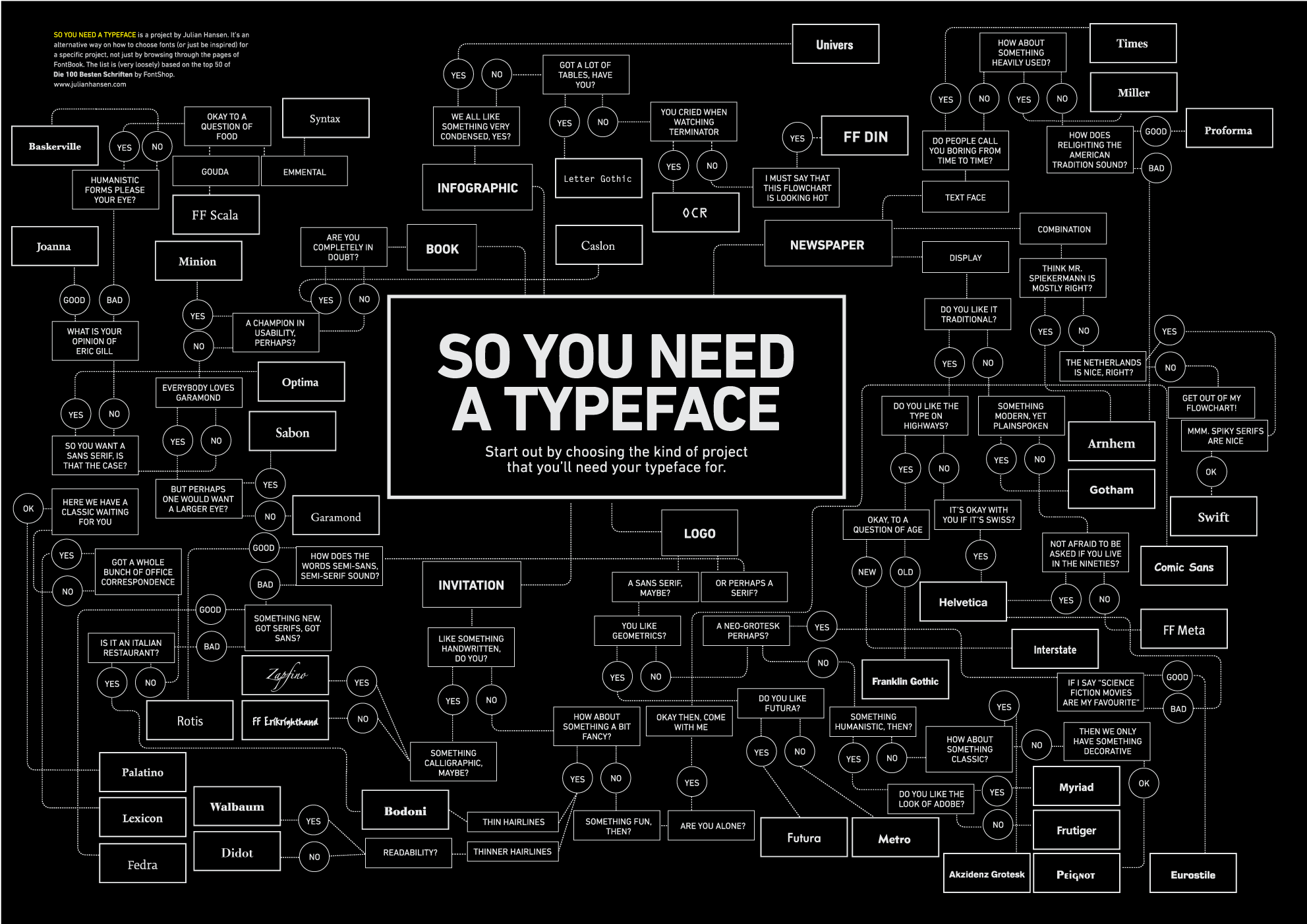 Digital printing refers to methods of printing from a digital based image directly to a variety of media. It usually refers to professional printing where small run jobs from desktop publishing and other digital sources are printed using large format and/or high volume laser or inkjet printers. You would use this process of printing when you are printing from a computer using an ink jet. There are many companies that are using this process such as HP , Dell, and many others. I prefer HP though i love there products
Digital printing refers to methods of printing from a digital based image directly to a variety of media. It usually refers to professional printing where small run jobs from desktop publishing and other digital sources are printed using large format and/or high volume laser or inkjet printers. You would use this process of printing when you are printing from a computer using an ink jet. There are many companies that are using this process such as HP , Dell, and many others. I prefer HP though i love there products
Thursday, October 21, 2010
Lets Get Digital
 Digital printing refers to methods of printing from a digital based image directly to a variety of media. It usually refers to professional printing where small run jobs from desktop publishing and other digital sources are printed using large format and/or high volume laser or inkjet printers. You would use this process of printing when you are printing from a computer using an ink jet. There are many companies that are using this process such as HP , Dell, and many others. I prefer HP though i love there products
Digital printing refers to methods of printing from a digital based image directly to a variety of media. It usually refers to professional printing where small run jobs from desktop publishing and other digital sources are printed using large format and/or high volume laser or inkjet printers. You would use this process of printing when you are printing from a computer using an ink jet. There are many companies that are using this process such as HP , Dell, and many others. I prefer HP though i love there products
DaFaonts are Hot
 Dafont is a web site that lets you download free fonts from many of contributing artist.
Dafont is a web site that lets you download free fonts from many of contributing artist.Wednesday, October 20, 2010
Printing Process

Foundry Review

Most of their fonts are at more of an affordable price than there competitors for example Fonts.com has a particular font that I like named Lomo. You can buy either the full package of these fonts for $1,661.00 or just specific fonts from the Lomo collection for $54.00 each. There biggest competitor which just about everyone has mentioned in the blogs is Fontshop.com
They offer the same Lomo font but they don't offer it in single fonts, they sell it as a whole with 37 fonts for $1,499.00.
Gathering your information i.e image, text or both through an analog means like scanning in your document or through a digital means like a camera or word processor document.
converting your information; your file format needs to be converted to a usual file such as TIFF or EPS.
Typeface Profile.
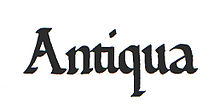
History of Type.

Pictogram-History
While cave paintings, dating as far back as 20,000 B.C. are the first evidence of recorded pictures, true written communication is thought to have been developed some 17,000 years later by the Sumerians, around 3500 B.C.
They are known to have recorded stories and preserved records using simple drawings of everyday objects, called pictogram.
Pictogram- Modern uses
Pictogram remain in common use today, serving as pictorial, representational signs, instructions, or statistical diagrams. Because of their graphical nature and fairly realistic style, they are widely used to indicate public toilets, or places such as airports and train stations.Pictographic writing as a modernist poetic technique is credited to Ezra Pound, though French surrealist accurately credit the Pacific Northwest American Indians of Alaska who introduced writing, via totem poles.
Tuesday, October 19, 2010
Printing Process
I would actually recommend doing a movie poster this way because you can control the negative spacing while painting. Being in control of how you can form the lettering without having to use a pre-formed platform makes this a more profitable way to enjoy making something that is your own. (I apologize for not having a picture, the button wouldn't let me click it.)
"http://www.reuels.com/reuels/Silk_Screen_Printing_Instructions.html">http://www.reuels.com/reuels/Silk_Screen_Printing_Instructions.html

http://www.fontshop.com/fonts
Unfortunately, other companies do not sell this type font, but it is a personal designed font that ranges from 200.00$ to 400.00$ for font "families". I cannot for the life of me understand why someone would pay almost their whole weeks pay for a font. But for the initial reasoning, you only have to pay the one fee.
"Freelance Designers invest in those fonts for their duration of their career. These fonts are readily available for their immediate use for any design project, large or small." -Bianca Ramos, Graphic Design Major

http://www.evertype.com/celtscript/fonthist.html
DESIGNER: John Kearney
TIME PERIOD: 1571- 1658
CLASSIFICATION: Gaelic
During the early 16th century, a type was passed around Europe. The Irish had a specific language called "Gaelic", which was hand written or carved in gorgeous loops, curls and various flowery aspects. A man by the name of John Kearney, who was from Dublin, created the typeface for the Gaelic language and passed the blocks unto England.For the use of the Gaelic type, it would make a very eye catching and pleasing poster type. If you were to look at the type style on Tolken's book.... his very old, paper back copy of "The Hobbit" has it's cover typed with the Gaelic style, which gives it the feeling of an old fantasy tale about to be told. So many messages can be used visually by using the Gaelic type.
History of Asian Typography

The history of typography is a very broad topic to cover. For instance, many countries around the world have their own take of how they print their own lettering. Many countries have started with wood, steel and ink. One country in particular, Japan, has a very unique way of creating type. During the feudal era of Japan, many of the writing were done by calligraphy, which is the painting of letters with a brush of various tip sizes and a small well of ink. This was a painstakingly long and tedious endeavor.
As the turn of the century came, the wooden blocks were made as was a different method of lettering. Each wooden block would have a word embossed in the wood and each block would painted over with ink and lined up in an order desired. they are then placed in between two wooden presses and pressed down upon with force. The picture provided has a form of the woodblock pressing on a tranquil Japanese scroll.
In my own personal belief, the Japanese lettering can also be counted a-s an art form as well as well as a historical advancement of mass production of documents.
Foundry Review

Typeface Profile


History of Typography
Printing Process- Letterpress
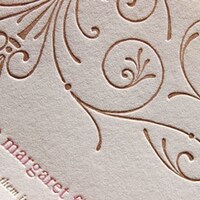
Your type or image will be indented into the paper. Using a raised surface printing plate or type, the depth of the resulting "bite" will vary depending upon the type of paper. Thicker, softer papers will carry a deeper impression than hard or thin papers.
Foundry Review

Monday, October 18, 2010
digital printing

- Gathering your information i.e image, text or both through an analog means like scanning in your document or through a digital means like a camera or word processor document.
- converting your information; your file format needs to be converted to a usual file such as TIFF or EPS.
The Revolutionary Revolt
 Revolt Is A Font That was Created By Douglas Vitkauskas
Revolt Is A Font That was Created By Douglas VitkauskasPrinting Process - Thermography

Monday, October 11, 2010
Wednesday, October 6, 2010
Printing Process- Gravure

Almost like offset, but extremely high quality. The cost is prohibitive and it is rare if ever that anyone would consider this method for an invitation job. Harder to find in the United States.
Printing Process
 Screen Printing
Screen Printing- Screen printing is a printing technique that uses a woven mesh to support an ink-blocking stencil. The attached stencil forms open areas of mesh that transfer ink as a sharp-edged image onto a substrate. A roller or squeegee is moved across the screen stencil, forcing or pumping ink past the threads of the woven mesh in the open areas.
- Screen printing is also a stencil method of print making in which a design is imposed on a screen of silk or other fine mesh, with blank areas coated with an impermeable substance, and ink is forced through the mesh onto the printing surface. It is also known as Screen Printing, silkscreen, seriography, and serigraph
- Screenprinting inks can be used to work with a variety of materials, such as textiles, ceramics, wood, paper, glass, metal, and plastic. As a result, screenprinting is used in many different industries, including:
Clothing
Textile fabric
Product labels
Printed electronics, including circuit board printing
Thick film technology
Balloons
Medical devices
Snowboard graphics
Signs and displays
Since screen printing is such a popular and versatile for of print it is quite easy to find places right in Cobleskill that have screen printing options, one for example is Printz & Patternz.On their website they explain that they will make shirts for any reason; to support schools, teams, and people. Also they have an about section where customers can learn about their history, the founders and the family. Along with a full portfolio of their past works and an on line quote option they really have created a convenient website.
Monday, October 4, 2010
Foundry Review

Located in the US the Font Shop was founded by Erik Spiekerman and Nevill Brody in 1989. They have a huge library of over 150,000 fonts from their own archieves and other foundaries. Prices range from 60 to over 200 dollars.
This font is called Double Think and is priced at 60.00$  :
:
A competitor of the Font Shop is the Font Factory, their price range is from 6 to 50 dollars. While they might have a greater price range, they dont have the extensive catalouge and have a few cataories with no fonts listed at all. While the Font Shop might be on the pricy side its worth it when it comes to selection.
Typeface Profile
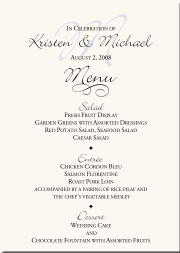 Bickley script was designed by Alan Meeks in 1986 and is based on the handwriting forms popular at the end of the 19th century. The flowery capitals contrast beautifully with the delicate and reserved lower case letters, fit perfectly together and enhance the handwritten character of the font. Bickley Script looks as though it were written with a fine tipped pen and has an elegant, nostalgic charm. The font is best for headlines as well as short to middle length texts and should be set in point sizes of 14 or larger, and Bickley Script's capitals can also be used as initials with other alphabets. As is pointed out with this wedding menu design, Bickley can be well used on invitations
Bickley script was designed by Alan Meeks in 1986 and is based on the handwriting forms popular at the end of the 19th century. The flowery capitals contrast beautifully with the delicate and reserved lower case letters, fit perfectly together and enhance the handwritten character of the font. Bickley Script looks as though it were written with a fine tipped pen and has an elegant, nostalgic charm. The font is best for headlines as well as short to middle length texts and should be set in point sizes of 14 or larger, and Bickley Script's capitals can also be used as initials with other alphabets. As is pointed out with this wedding menu design, Bickley can be well used on invitations Typefae Profile
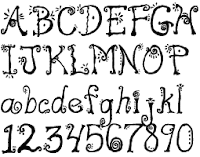
Type Face Profile
History of typography
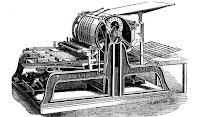
Wednesday, September 29, 2010
History of Typography

Time period- 1919
Where- Weimar, Germany
Who- german architect Walter Gropius
The core concept of Bauhaus was to re-imagine the materials of the world to reflect the unity of all arts. It combined fine arts and design education, the curriculum started with studies on materials, color theory and formal relationships in preparation for more specialized studies.
At the Bauhaus, typography was conceived as both as empirical means of communication and an artistic expression, with visual clarity stressed above all.
Bauhaus was mostly influential because it went against the standards of font and how text should be positioned on paper, in a time and country where everything was being very closely controlled by the government. They dared to take order and rearrange text and in doing so they made a very liberating statement.
Wednesday, September 22, 2010
History of Typography

established the first newspaper with William Childs in Amsterdam.
In 1826 he went to New York, and continued the printing business. At that time the largest metal type that was made was only twelve-line pica, and it cost more than the average printer could afford to pay. This led to his making large type from wood, and he followed the method of engravers by using cross-grained sections. The advantage of wood-type having been established, it was found necessary to devise means of manufacturing it with greater rapidity and less labor. In 1827 Mr. Wells found that by using a vertical revolving cutter a more speedy removal of the superfluous wood could be effected. This device, improved by various modifications such as the pantograph introduced by William Leavenworth in 1834
,is known as the routing machine.
Good Ole English

William caslon: caslon Typeface






William Caslons' Typeace:

Typography,
the design, or selection, of letter forms to be organized into words and sentences to be disposed in blocks of type as printing upon a page.


